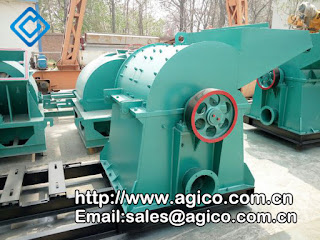Wood Pellet Market Analysis European
About a decade ago, EU launched a program to reduce emission and promote renewable energy. This policy creates a huge opportunity for the wood pellets manufacturers. In America, a large number of wood pellets exporter sprung up, and the pellet output has a steep rise.
In the future, Europe will remain as the largest market of wood pellets, and the strongest driver of the growth. By 2020, a lot of wood pellet consumption projects in Europe will be completed. Meanwhile, the Asia market will provide new opportunities for wood pellets manufactures.
Wood pellet production and consumption in 2015 and 2016
Our website: http://www.agico.com.cn
Our E-mail: sales@agico.com.cn
European wood pellet Market composition
According to the statistics of 2016, the global wood pellet production is near 29 million ton (without China). Europe contributed 14 million tons, which accounts for 65% of its own demand—21.7 million tons. Others are supplied by North America and Russia.
Among the 21.7 million tons consumption in Europe, 42.6% is for home heating, 11.8% for business use, 7.3% for CHP (combined heat and power generation), and 38.3% for the power plant. Fiona Matthews, the research manager of Hawkins Wright point out the difference between residential and industrial consumption. The demand of the residential heating market will level off, while the industrial market has strong growth with the completion of Lyne Mouth and MGT Power project. Although the number of the industrial consumer is low, every consumer has quite large consumption.
European wood pellet consumption in 2016
Industrial wood pellets market
There is going to be 5 new industrial pellet-consumption projects come into use before 2020. The largest projects are EPH by Lyne Mouth. This 420 MW coal-fired power plant will transform into biomass pellet plant that will consume 1.6 million tons of wood pellets. Besides, the 299 MW MGT power plant will consume 1.1 million tons of pellets every year since 2020. Other projects in Holland will create around 1.5 million tons of wood pellets demand.
Many countries plan to transform their coal-fired power plant to using wood pellets. The superior manager of Poyry management consultancy Hannes Lechner said that they had received a lot of inquiries from electric power companies in Spain, Portugal, Germany. They want to transform into biomass power plant, but they need support from the governments.
Lechner believes the wood pellet demand will be steady for a long period since 2020. And it will shrink since 2026 with the end of Drax and Lyne Mouth’s support. At that time, American’s supplier will suffer the huge impact. European supplier in Portugal and Baltic region will also be affected. But the inflection point will not come soon.
European biomass energy policy
Nowadays, the industrial and home pellet market development is determined by policies.
The director of European wood pellet association Gauthier said 2018 is a crucial year for the development of renewable energy. EU is going to make up a sustainability criterion on the biomass energy. Gauthier explains that by 2020, only biomass energy can meet the criteria. And it is most likely that only equipment above 20MW can meet the requirement, but the details are under discussion.
Another important policy aims to promote renewable energy in H&C (heating and cooling), and improve the energy efficiency in buildings. Hydrocarbon decarburization for civil use will be a market opportunity, said by Gauthier, and the biomass emission of boilers raise more attention.
According to Fiona Matthews, other European countries also carried out policies to promote residential and business wood pellets market, such as Fond Chaleur in France, renewable heat support in Ireland, Conto Termico in Italy, and biomass boiler subsidiary in Austria, German, Poland, and Holland. In industrial wood pellet market, England has ROC (Renewables Obligation and Contract) policy, Holland has SDE+, and Denmark has Thermal tax.
Wood pellet supply and demand
Matthews points out the biomass energy supply and demand is not balanced. Owing to low inventory and sudden cold flow in some areas, the heating supply drops down. But in the long run, the growing demand in Asia will bring along the heating wood pellet industry.
If the heating supply industry keeps growing, and the biomass projects are completed, the increasing demand will create challenges to the wood pellet production. Nowadays, Europe wood pellet demand is much higher than the production, so it needs to import wood pellets from America. Matthews said the competition between America and Europe is not fierce, because local manufacturers target at industrial consumers, and America manufactures target at personal uses and middle-scale market.
Wood pellets are exported from America to Europe
He also claims the market change is fast. Many years ago, he predicts Germany will become a net importer of wood pellets. But the growth arrest and the sales drop. Everything is different from the past.
At last, Lechner point out the EU committee can change the rules at any time. There are many influencing factors and uncertainties. If German plan to develop biomass hybrid power generation, the demand will rise up quickly. The same applies to Spain and Portugal. There will be more upward opportunities in the future. Wood pellet manufactures must be sensitive to the market and work out a survival strategy.






评论
发表评论